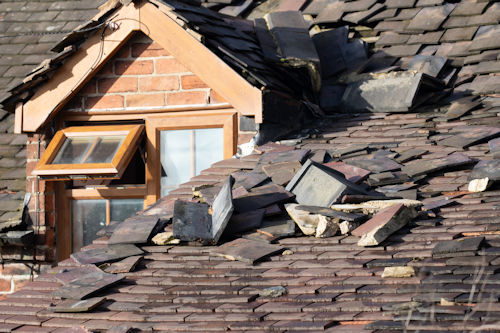Navigating the unpredictability of homeownership can often feel like steering a ship through stormy waters. Among the many waves you’ll face are the inevitable, and often costly, home repairs. Suddenly, your sanctuary is in need of serious attention: the roof is showing ominous signs of wear, the HVAC system has decided to take an indefinite vacation, or the water heater has sprung a leak. These glitches in your homely haven can wreak havoc on your finances if not anticipated and planned for. In this guide, we’ll delve into the realities of these unexpected home repairs, the importance of creating a safety net, and strategies for smart spending when the need for major repairs arises. This isn’t just a budgeting guide; it’s your compass for weathering the storms of homeownership.
Understanding the Unexpected: The Reality of Home Repairs
When it comes to homeownership, one truth remains undeniable: Unexpected home repairs are a matter of when not if. From a leaky roof to a malfunctioning HVAC system, these unexpected incidents can severely impact your finances if you’re unprepared. It’s important to recognize that property upkeep extends beyond daily chores and encompasses these larger, often unforeseen expenses. By setting aside a portion of your paycheck regularly, you can create a safety net for those rainy days.
Knowing How Much of Your Paycheck to Set Aside
According to American Family Insurance setting aside 1% to 3% of your home’s initial price each year for maintenance and repair costs is a good rule of thumb. However, this number may vary depending on the condition and age of your home. For instance, if your house cost $200,000, you should aim to save between $2,000 to $6,000 annually. By doing this, you create a buffer for any unexpected repairs. If your home is older, you may want to increase this percentage, as older homes tend to require more maintenance. Furthermore, consider setting aside a larger percentage if you live in an area prone to natural disasters or severe weather conditions.
Living in regions with severe weather conditions significantly increases the likelihood of your home suffering from weather-related damage. Heavy rain can lead to flooding and water damage, extreme heat can warp and crack surfaces, and snow can cause weight-related roof strain. These potential damages become even more prominent if your area is prone to more severe natural events like hurricanes, tornadoes, or earthquakes. By allocating a larger portion of your paycheck to your home repair fund, you preemptively combat these potential costs. This extra preparation safeguards your home and your finances, ensuring that you’re not caught off guard by a hefty repair bill following an unexpected weather event.
Allocating Funds for Different Categories of Home Repairs
When it comes to budgeting for different categories of home repairs, it’s a good idea to break down the allocation based on repair type. Allocate a larger portion of your savings towards essential home systems like electrical and plumbing, which can be expensive to repair and are crucial for the functioning of your house. Similarly, another significant portion should go towards structural maintenance, including roof replacement and foundational issues, as these are critical for the safety and longevity of your home. Also, don’t forget to set aside a small amount for cosmetic repairs and improvements, as these can help maintain or increase your home’s value over time. Lastly, if you have any special equipment or unique aspects in your home, such as a pool or an extensive garden, consider having a separate allocation for these as they may require specific maintenance.
According to Forbes, it costs $11,500 for a new roof on an average-sized home. Modernize has a calculator to help you calculate how much a new HVAC system should cost you based on the size of your house but the average is between $6,465 – $11,877. The one good thing about replacing your HVAC system is that new systems are much more efficient than older systems, so a new system should drastically reduce your energy costs, thus paying for itself in the long run. Bob Villa says the average water heater costs $1,217 to have replaced. But you can get some really fancy energy saving ones for much more. And of course you can save quite a bit if you are able to DIY.
Managing Expenses When Unexpected Repairs Strike
When an unexpected repair arises, it’s crucial to manage your expenses wisely to alleviate unnecessary financial stress. Start by doing an online search for “average cost to replace XYZ” so you have a rough idea of how much it should cost, then, obtain multiple quotes from different service providers to ensure competitive pricing. For example, if you’re dealing with a residential HVAC repair, it’s best not to settle for the first quote you receive. Instead, compare prices and reviews from various professionals in your area. Lastly, remember that while it’s important to mitigate costs where possible, opting for the cheapest quote may not always yield the best results; quality workmanship, durability, and service warranty should be factored into your decision.
In conclusion, the key to navigating unexpected home repairs lies in preparation and savvy financial planning. By setting aside a designated portion of your paycheck for potential repair and maintenance costs, you’re equipping yourself for the unforeseen challenges that homeownership can bring. Remember, it’s not just about how much you save, but also how wisely you spend when that unexpected repair rears its head. Obtain multiple quotes, consider the quality of workmanship, and don’t shy away from investing in quality repairs for important home systems. With prudent planning and smart spending, you can turn unexpected home repairs from a financial nightmare into a manageable aspect of maintaining your home.
You might also like:
- Is a Home Warranty a Good Investment?
- Yearly Home Checkup: What To Look For
- Top 5 Home Upgrades and Repairs Worth Your Money
- Home Renovations Before Selling
- What Types of Financial Assistance Are Available for First-Time Homebuyers?
- 7 Benefits of Downsizing to a Smaller Home
- What to Do If Your House is Sagging?
- 7 Ways to Increase the Value of Your Home
- How to Choose a Residential Roofing Contractor
- Avoid a Money Pit: 4 Vital Inspection Items before Buying an Older Home
- 4 DIY Ways to Increase Value of and Help Sell Your Home


